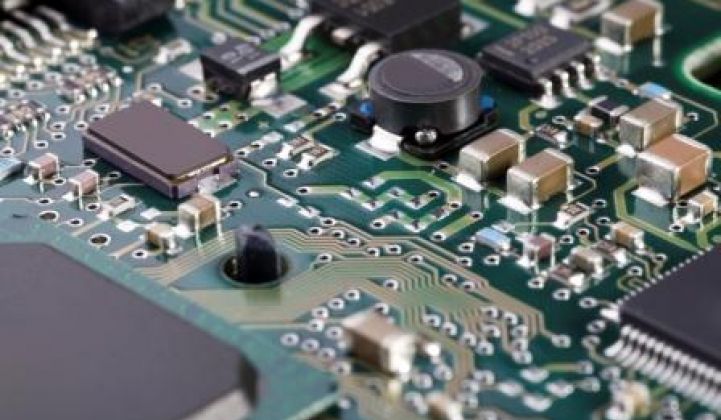Azuray Technologies is coming out of stealth. Founded in 2008, funded by NEA ($13 million over two rounds) and based in Portland, Oregon, Azuray builds Maximum Power Point Tracking DC-to-DC converter electronics that, like other solutions of this type, can provide up to 25 percent greater energy harvest from underperforming solar PV panels. The product also includes power-line communications and safety shut-off features.
The startup, uniquely, looks to make both integrated DC-to-DC power optimizers, as well as microinverters.
Azuray is emerging into public view with the announcement of a partnership with Renhe Photovoltaic Technology, China’s largest solar panel junction box manufacturer -- integrating Azuray’s Maximum Power Point Tracking (MPPT) DC-to-DC converter electronics into Renhe's photovoltaic junction boxes. Renhe has a 70 percent market share in China, with a worldwide market share of 30 percent, according to the firm.
In addition to Renhe, the startup has just announced that it's working with one of the globe's largest manufacturers of solar panels, Suntech, to bring smarter solar panels to market. Suntech has shipped more than 10,000,000 photovoltaic panels to more than one thousand customers.
As with all of the entrants in the class of solar electronics, panel-by-panel MPPT minimizes power losses from shading, soiling, panel mismatch and thermal effects.
I spoke with Gil Miller, Azuray's VP of Business Development. He reinforced the idea that the firm is focused on both DC-boost optimization as well as microinverters, saying they "want to have a product offering that lets the market decide what they want to buy." Miller said that the DC-boost product is just the first stage of a microinverter.
Greentech Media was amongst the first to pick up on the trend of integrating electronics into the solar module itself. The reason behind this approach is simple: cost. There's no reason to duplicate connectors and wire in the emergence of a new product category, namely, the AC module.
Azuray's microinverter design does away with electrolytic capacitors, a potential reliability issue. Other microinverter firms like Enecsys and SolarBridge have also replaced the electrolytic capacitors in their microinverter designs. Enphase, the microinverter market leader, uses electrolytic capacitors.
The firm claims that if the Azuray product was added to every solar panel today, Azuray’s technology would produce as much incremental energy as two conventional power stations.
Andrew Beebe, Suntech's Chief Commercial Officer said, “We are very excited about this space, and we’ve been dedicating significant R&D efforts in this area for some time. We’re happy to finally start sharing these efforts with the public.”
Azuray declined to quote the per-watt cost of their product.



